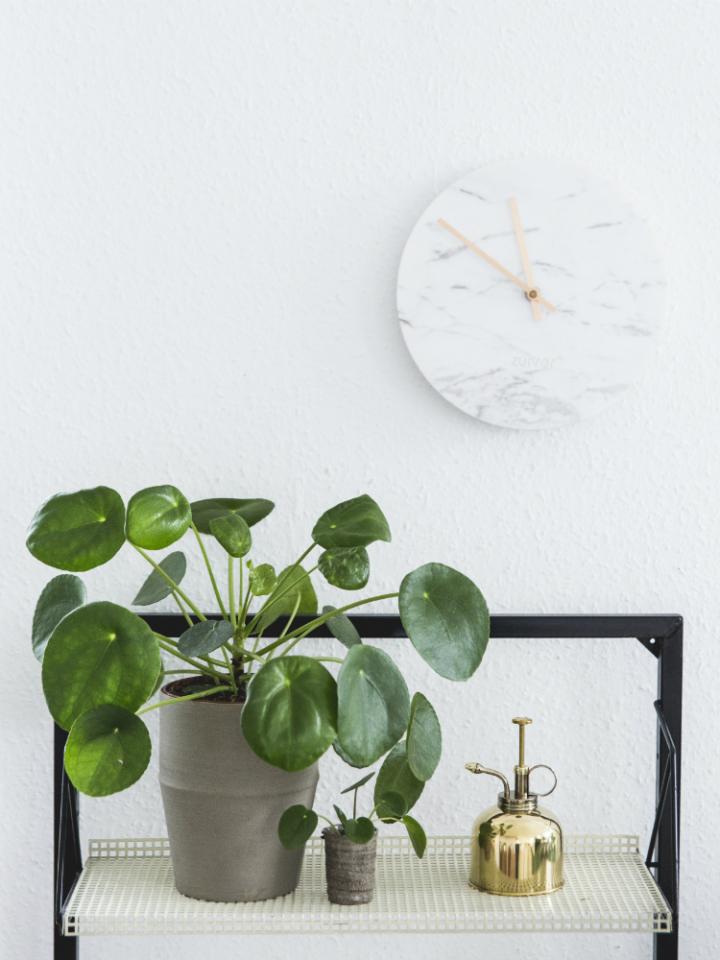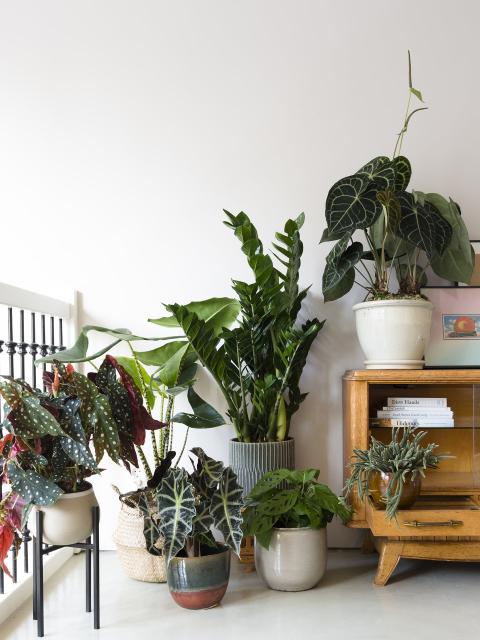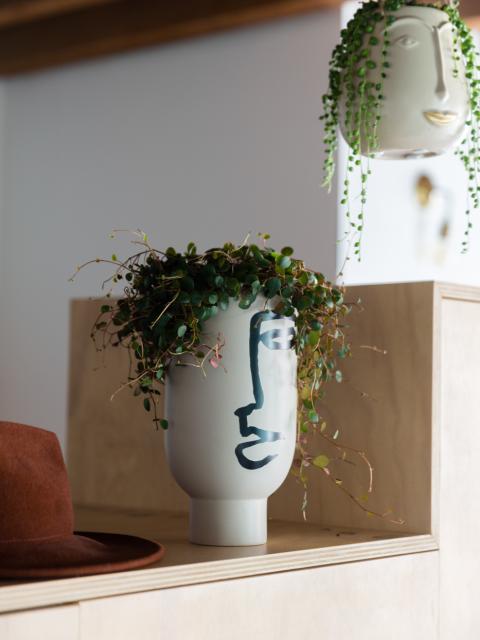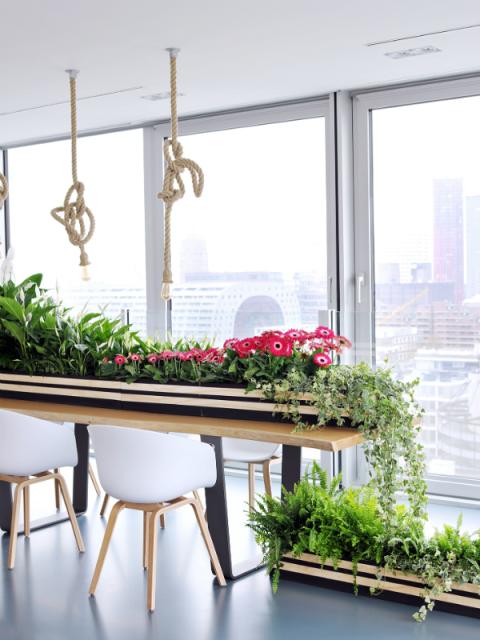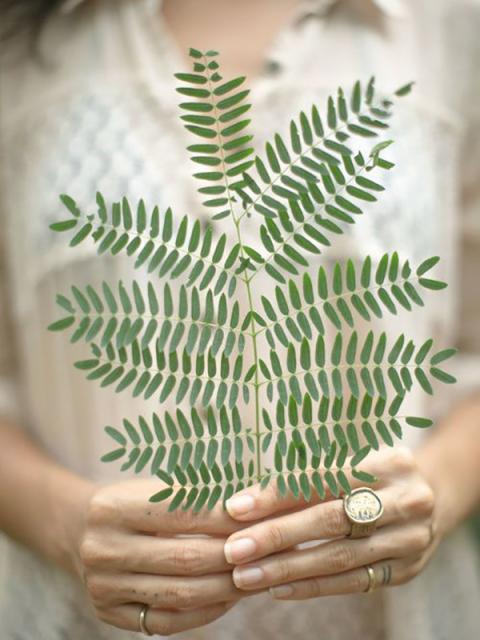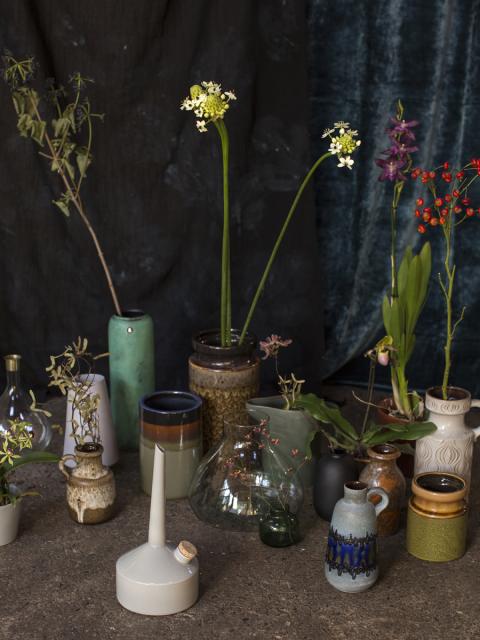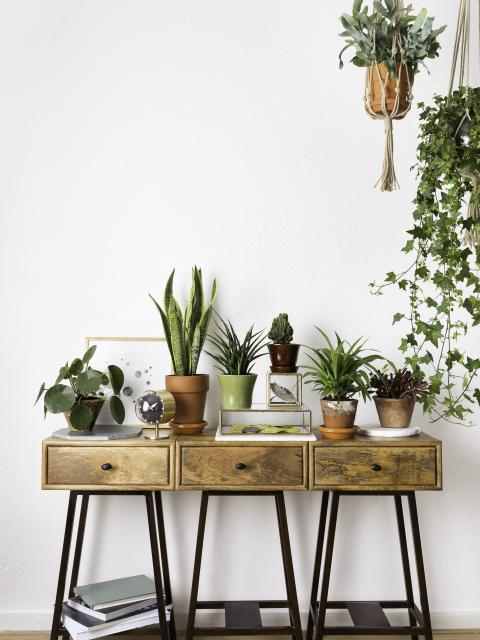CHINESE MONEY PLANT PLANT: CHARACTERISTICS, COLOURS AND SHAPES
Chinese money plant or Pilea peperomioides, belongs to the nettle family (Urticaceae), which also includes plants such as nettle and glasswort.
You can recognise this plant by its small, flat, round leaves that are reminiscent of coins or pancakes. The leaves are glossy, leathery, thick and dark green and balance on long, thin stalks. These stems grow from a narrow, tree-like stem. As the plant ages, the stem starts to twist. The unusual plant grows to an average height of about 40 cm.
DOES CHINESE MONEY PLANT HAVE FLOWERS?
The Chinese money plant can grow small flowers that bloom for several weeks, but this is very rare. The flowers bloom on the stem and are white, green or pink. These flowers appear when the plant is thriving, especially after a period when the plant has experienced cooler temperatures and then experiences heat afterwards. You can leave the flowers with no issues and if necessary, give the plant some plant food to replenish nutrients.
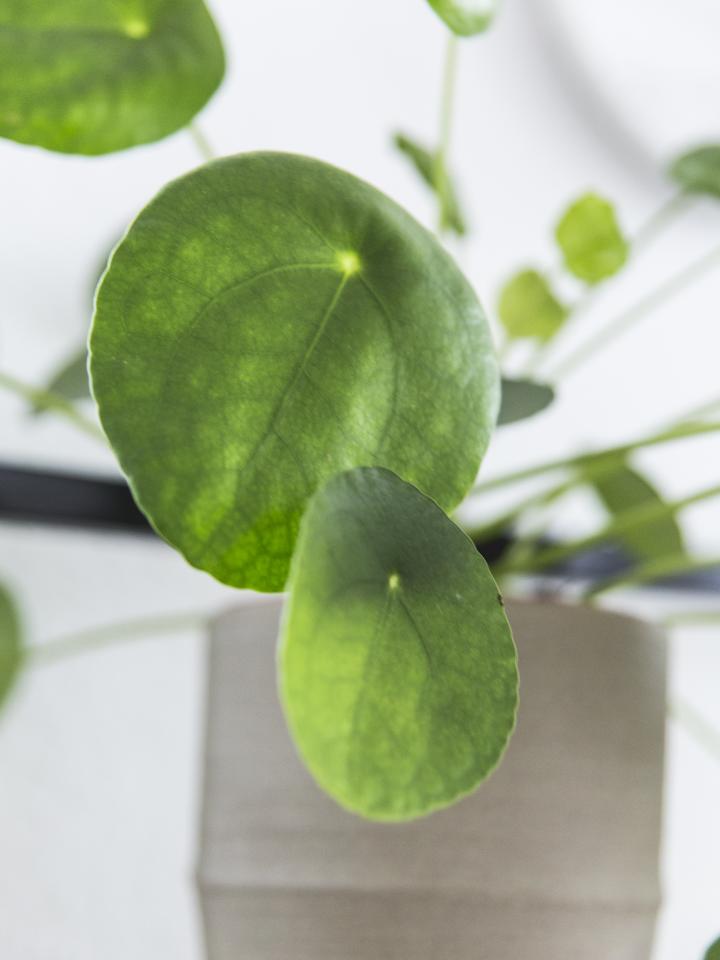
DIFFERENT SPECIES OF CHINESE MONEY PLANT
This plant belongs to the genus Pilea, within the nettle family. This genus contains more than 600 species, of which Pilea peperomioides is the most well-known. Chinese money plant has no official subspecies, but a number of varieties have been marketed. However, the ‘common’ Chinese money plant is the most well-known and widely found.
- Pilea peperomioides ‘White splash’: this variety of Chinese money plant stands out for its variegated leaves with white or cream coloured spots. These spots provide a great contrast to the green leaves. Due to the white spots, this species can be slightly more sensitive to light.
- Pilea peperomioides ‘Mojito’: this variety of Chinese money plant has leaves with a mottled pattern of different shades of green, creating a playful effect.
- Pilea peperomioides ‘Sugar’: the leaves of this variant of this Chinese money plant have a silvery sheen, making them look very unique.
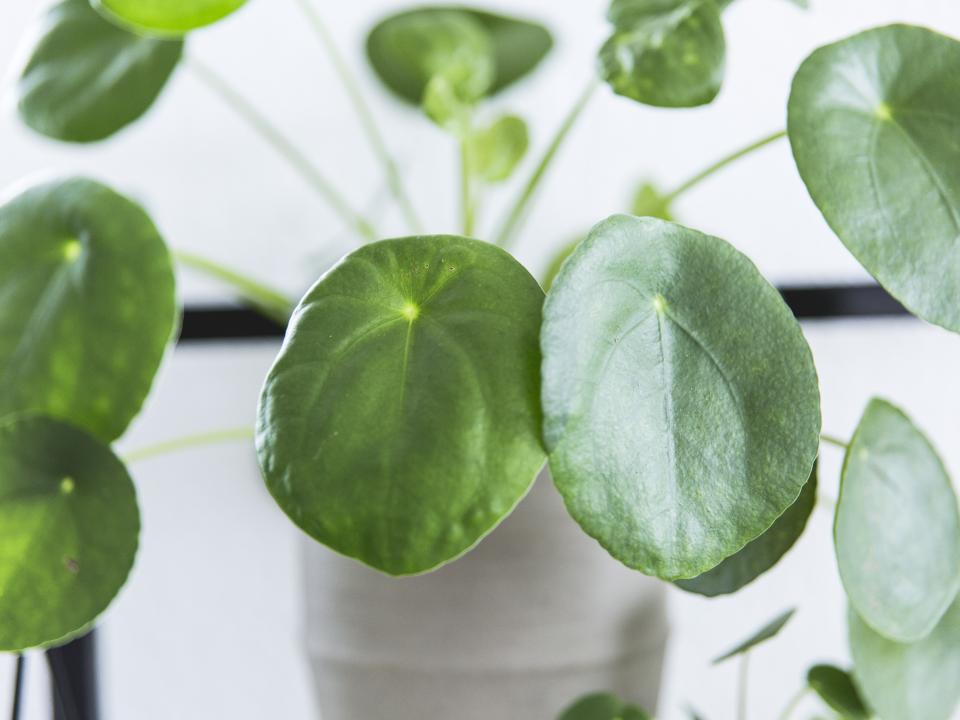
AIR-PURIFYING QUALITIES OF THE CHINESE MONEY PLANT
Chinese money plant is an air-purifyer, contributing to cleaner and healthier indoor air. It's not the most prolific or strongest air purifying there is (its purification area is less than 10 m2), so if you're interested in this quality of the plant, we suggest having more than one in your home. Fortunately, Chinese money plant is so easy to propagate that this won't be difficult to achieve.
LOCATION AND CARETAKING OF CHINESE MONEY PLANT
Chinese money plant is an easy-to-care-for, undemanding houseplant. Green fingers or not, you can manage it. With these tips, you can make sure your Chinese money plant stays looking healthy and beautiful:
- Chinese money plant likes to live in a bright spot, but not in direct sunlight.
- Turn the plant regularly if you want the stem to stay as strong as possible and grow straight.
- Give Chinese money plant a weekly sip of water and it will be happy. Its soil shouldn't dry out but shouldn't be soaking wet either.
- In spring and summer, treat Chinese money plant to liquid plant food once a month, mixing it with the water while watering the plant.
- Chinese money plant likes warm temperatures and grows best at a room temperature between 15-25°C.
REPOTTING A CHINESE MONEY PLANT
It's not often necessary to repotting a Chinese money plant, as its not a fast grower so doesn't outgrow its pot quickly. If you do want to repot, choose a pot about 20% larger and preferably repot in the spring.
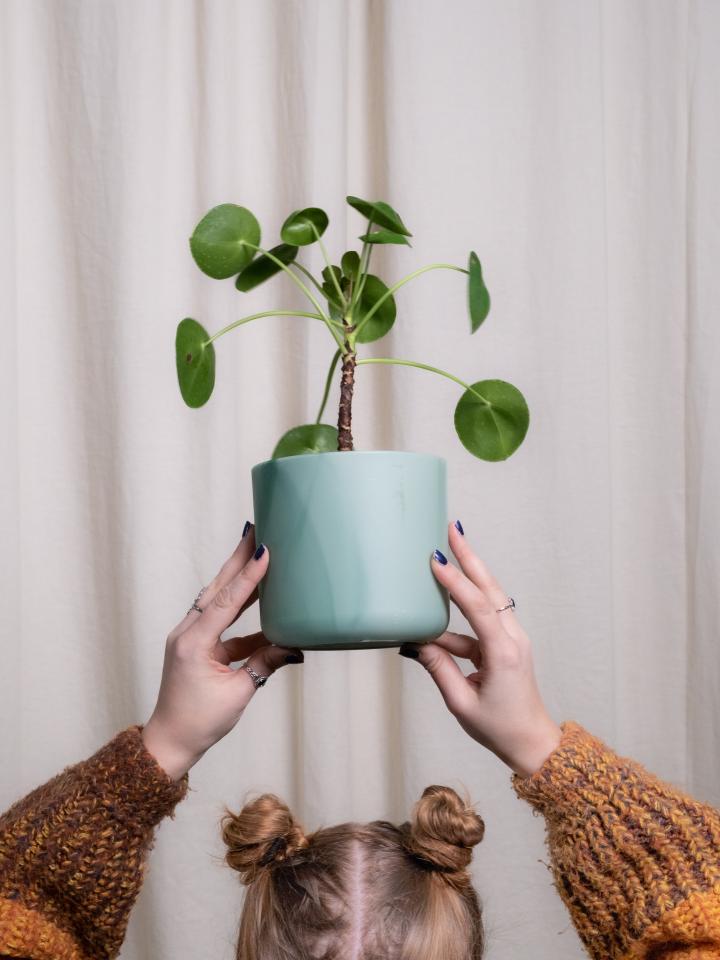
HOW TO PROPAGATE A CHINESE MONEY PLANT
One of the cool things about a Chinese money plant is that it's easy to propagate. The plants grow lots of little 'pups', or small versions of the plant, growing on its side or elsewhere in the same pot. It's simple to turn these into whole, brand-new plants. Check out the supplies and step-by-step plan for taking cuttings Chinese money plant below.
SUPPLIES NEEDED FOR TAKING CUTTINGS FROM A CHINESE MONEY PLANT
- A healthy Chinese money plant to take cuttings from
- A sharp, clean knife (or scissors)
- Pot
- Potting soil
- Water
- Optional: a glass or vase
CHINESE MONEY PLANT CUTTINGS: HOW TO DO IT
- Carefully cut the pups (cuttings) loose from the mother plant. Note: wait to cut the pups loose until they are about 5 centimetres high, so that they are strong enough.
- Immediately, plant the cutting into another pot with potting soil. Make sure the roots of the cutting make good contact with the potting soil and press down lightly. Water the plant. Tip: If you're not whether the roots of the cutting are strong enough yet, put the cutting into a glass with water to grow roots, then put it in a pot with potting soil and water it.
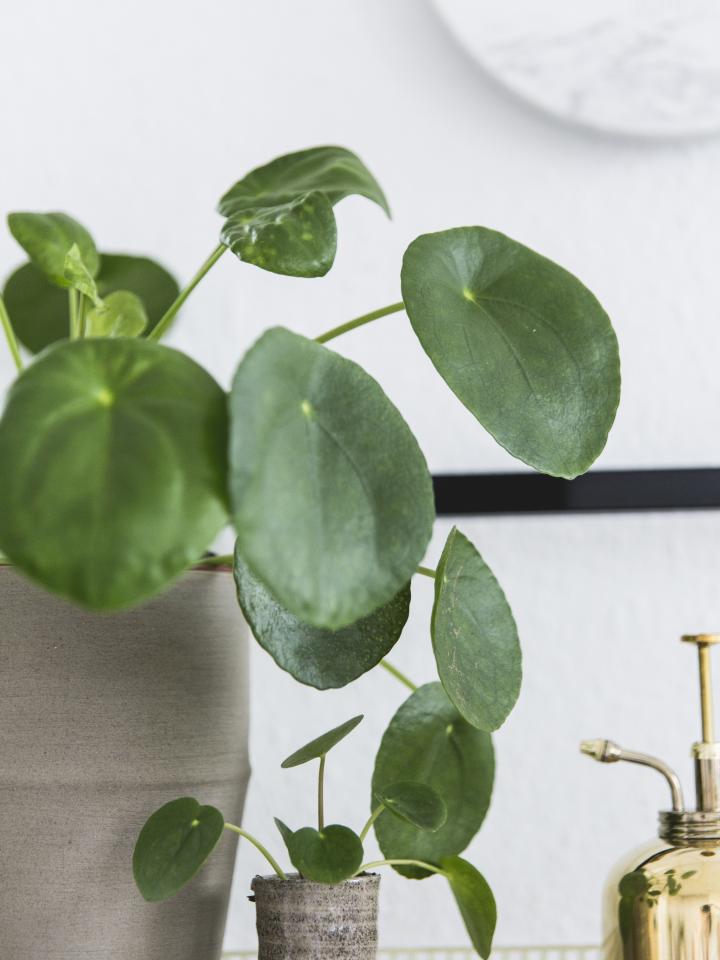
CHINESE MONEY PLANT SYMBOLISM
In China, the money plant has been a symbol of fortune for centuries. They say that when you place a coin in the earth near the plant, it spontaneously attracts prosperity. If you suddenly become very rich, you should definitely gift your plant a pot made of gold as it will certainly have earned it! The plant is also a symbol of prosperity in Europe.
Chinese money plant is also often seen as a symbol of friendship and affection. The plant owes this symbolic meaning to the fact that it is easily propagated, making it easy to share with friends and family. Giving cuttings strengthens a bond and creates attachment.
CHINESE MONEY PLANT ORIGINS
Originally, this plant comes from China, growing in mountainous areas in Yunnan province in southwest China - hence the British name for it. In 1946, a Swedish missionary brought the Chinese money plant from China to Europe and it slowly spread through Europe as people gave cuttings to friends and relatives. The plant was then also given the name ‘friendship plant’. Since then, it's became increasingly popular, especially in the 1970s, and has made another comeback in recent years. It's one of the most popular houseplants.
IS CHINESE MONEY PLANT POISONOUS?
No, Chinese money plant is not toxic to humans or animals.

